Let say i have a SpatialPolygons object with 3 polygons data name groupexc:
library(raster)
p1 <- matrix(c(2, 3, 4, 5, 6, 5, 4, 3, 2, 4, 5, 6, 5, 4, 3, 2, 3, 4), ncol=2)
p2 <- matrix(c(8, 9, 10, 11, 12, 11, 10, 9, 8, 4, 5, 6, 5, 4, 3, 2, 3, 4), ncol=2)
p3 <- matrix(c(5, 6, 7, 8, 9, 8, 7, 6, 5, 9, 10, 11, 10, 9, 8, 7, 8, 9), ncol=2)
groupexc <- spPolygons(p1, p2, p3)
And a SpatialPolygons object zoneexc that represents a single zone:
zoneexc = spPolygons(matrix(c(2,1,3,4,6,8,10,13,14,14,12,10,8,6,4,2,1,3,7,10,12,14,12,6,4,3,1,1,1,1,1,1), ncol=2))
Is there a way for me to expand the output from groupexc until it reach points in zoneexc?
before
plot(zoneexc, border='red', lwd=3)
plot(groupexc, add=TRUE, border='blue', lwd=2)
text(groupexc, letters[1:3])
after:
Any help would be appreciated.


